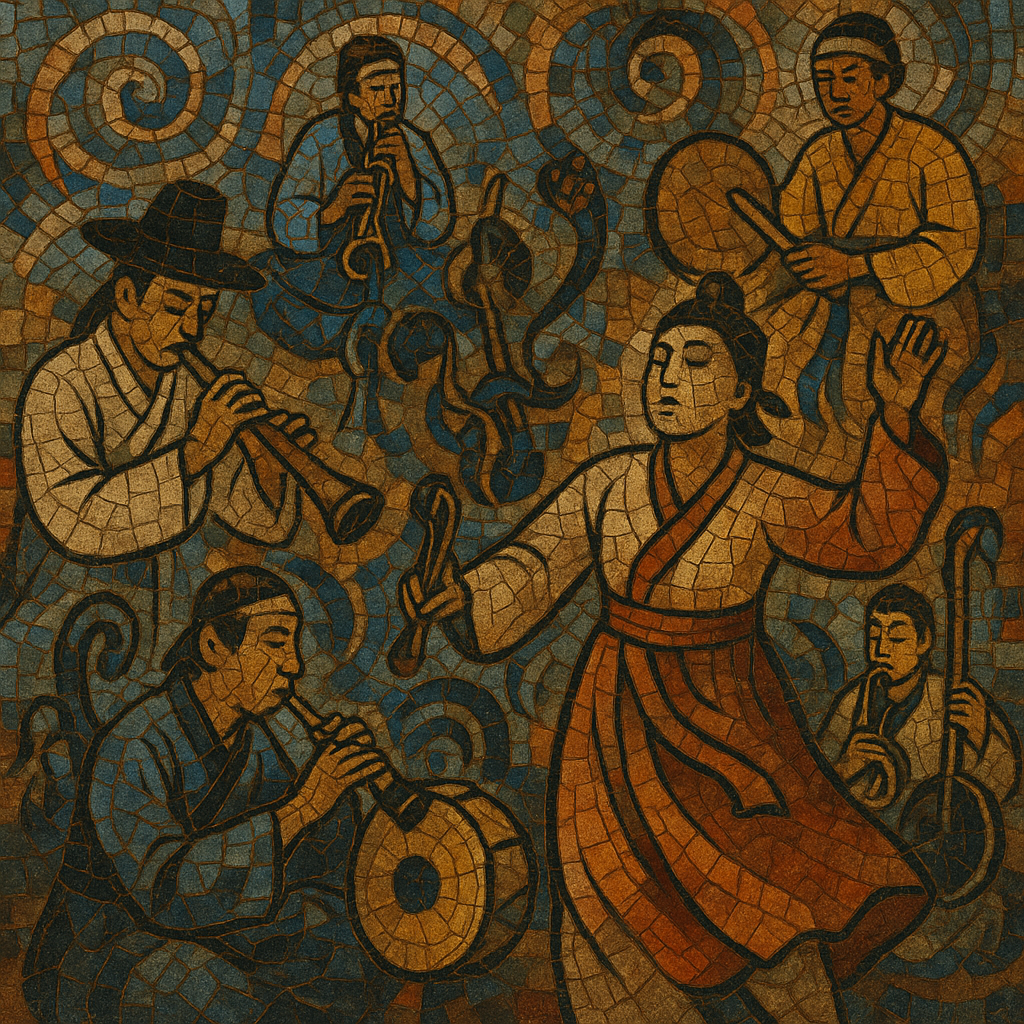Muak is the traditional Korean shamanic music performed within gut (ritual) ceremonies to invite, appease, and send off deities and ancestral spirits. It is an ecstatic, participatory music that combines chant, dance, and instrumental ensemble performance to induce trance states for the shaman (mudang) and the community.
The sound world centers on piercing double-reed oboes (taepyeongso/hojok), bamboo and reed flutes (daegeum and piri), two-string fiddle (haegeum), zither (gayageum), and a powerful percussion battery—small hand gong (kkwaenggwari), large hanging gong (jing), hourglass drum (janggu), and barrel drum (buk). Melodies move in modal frameworks such as ujo and gyemyonjo, while rhythm unfolds through cyclic changdan patterns like gutgeori, jajinmori, and semachi. Vocal delivery is declamatory and improvised, often recounting mythic narratives (e.g., bonpuri on Jeju) and blessing formulae.
Muak emerged from Korea’s indigenous shamanic cosmology, serving as the sonic core of gut ceremonies for healing, blessing, ancestor veneration, and communal renewal. Although its roots predate written history, documentation during the Joseon period (1392–1897) describes regional ritual styles, specialized instrumental groupings, and the chant repertories of mudang.
Over centuries, regional variants developed distinctive repertoires and timbres: the Hwanghae-do and Gyeonggi traditions emphasize piercing winds (taepyeongso) and bright gong timbres, while Jeju’s simbang lineage preserves extensive epic chant (bonpuri). The improvisatory ensemble idiom known as sinawi—built on modal cycles and flexible heterophony—crystallized around muak performance practice and became a cornerstone of Korean traditional improvisation.
In the late 19th and early 20th centuries, Confucian moralism, Japanese colonial rule, and later anti-superstition campaigns marginalized shamanic rites. After the Korean War, urbanization further reduced ritual contexts. Beginning in the 1960s, however, cultural preservation policies, academic ethnomusicology, and stage adaptations helped safeguard muak. Certain regional guts were designated Important Intangible Cultural Properties, enabling master shamans and ensembles to transmit their art.
Today muak survives both in living ritual contexts and in concert settings, where shamanic suites and sinawi improvisations are presented as gugak (traditional music). The idiom continues to inspire fusion projects, contemporary composition, and theater, while community rites remain vital in regions such as Jeju and the east coast.


